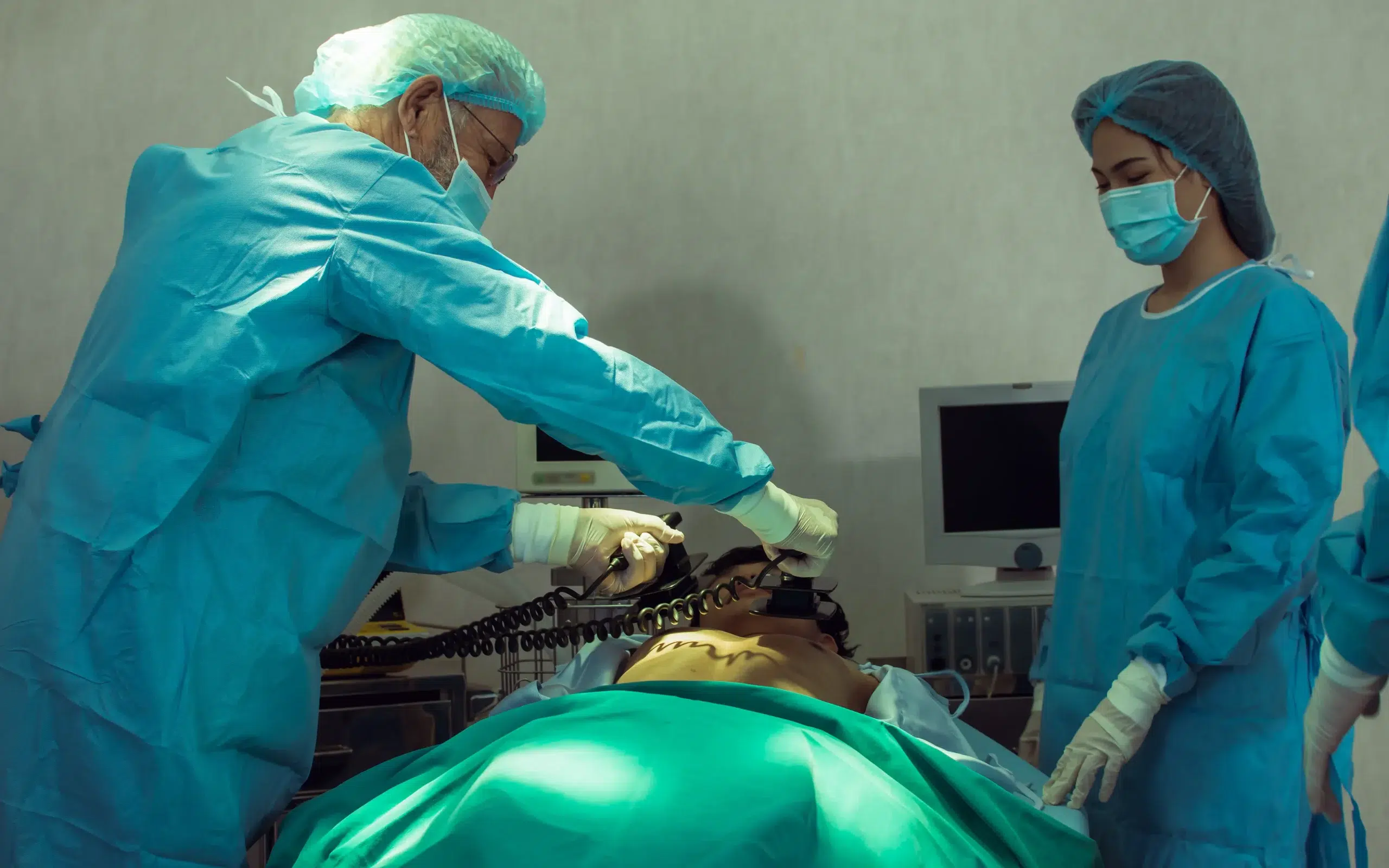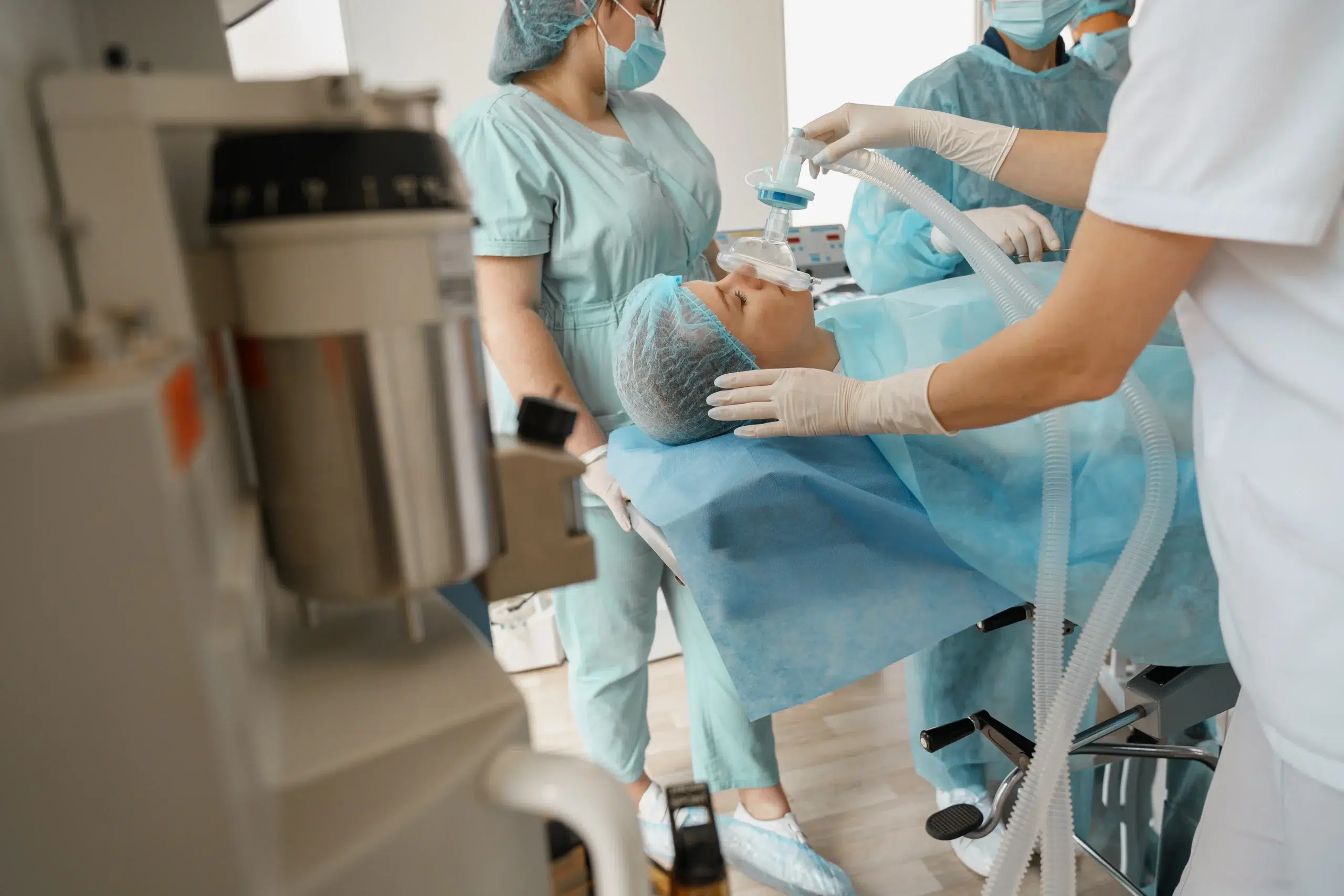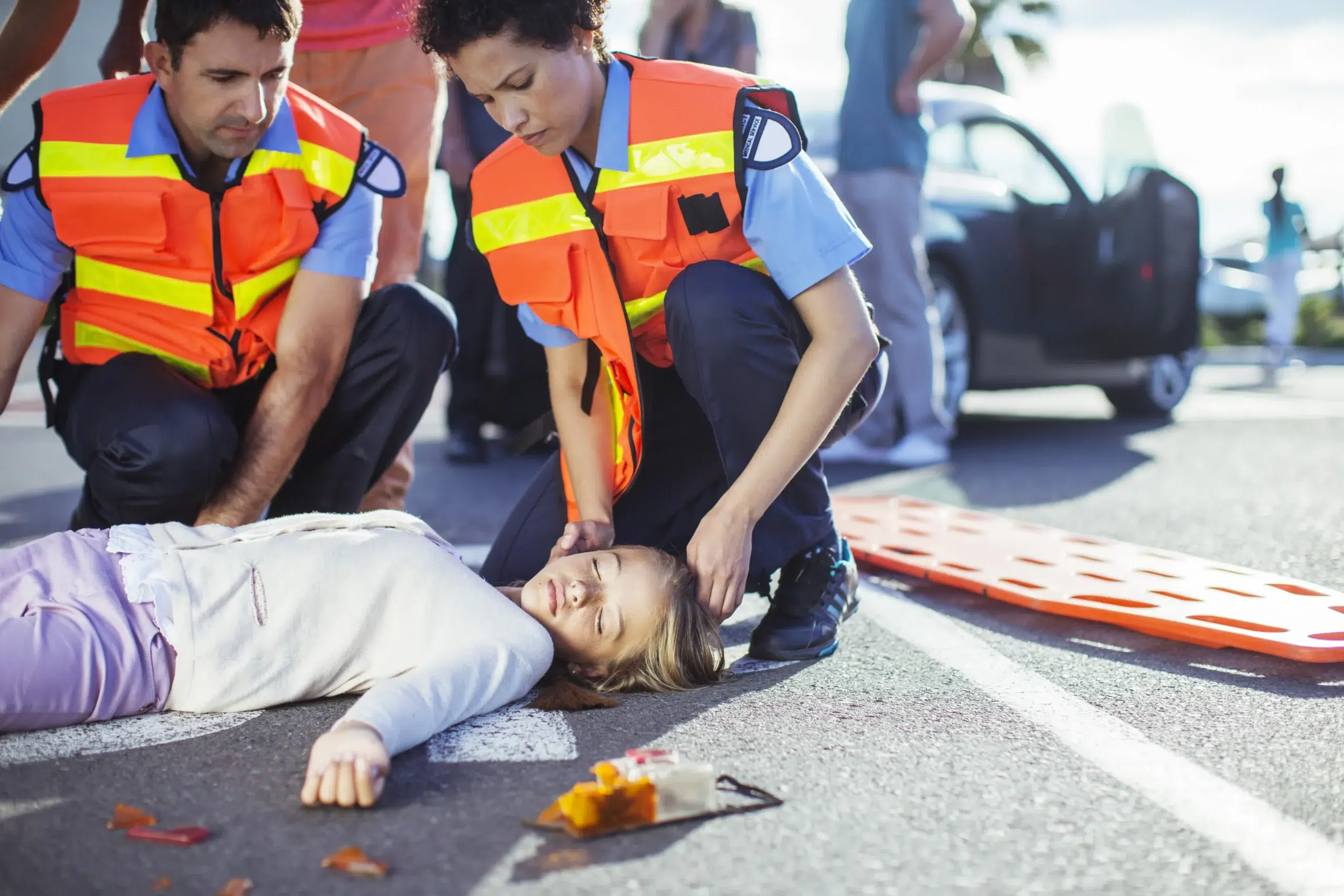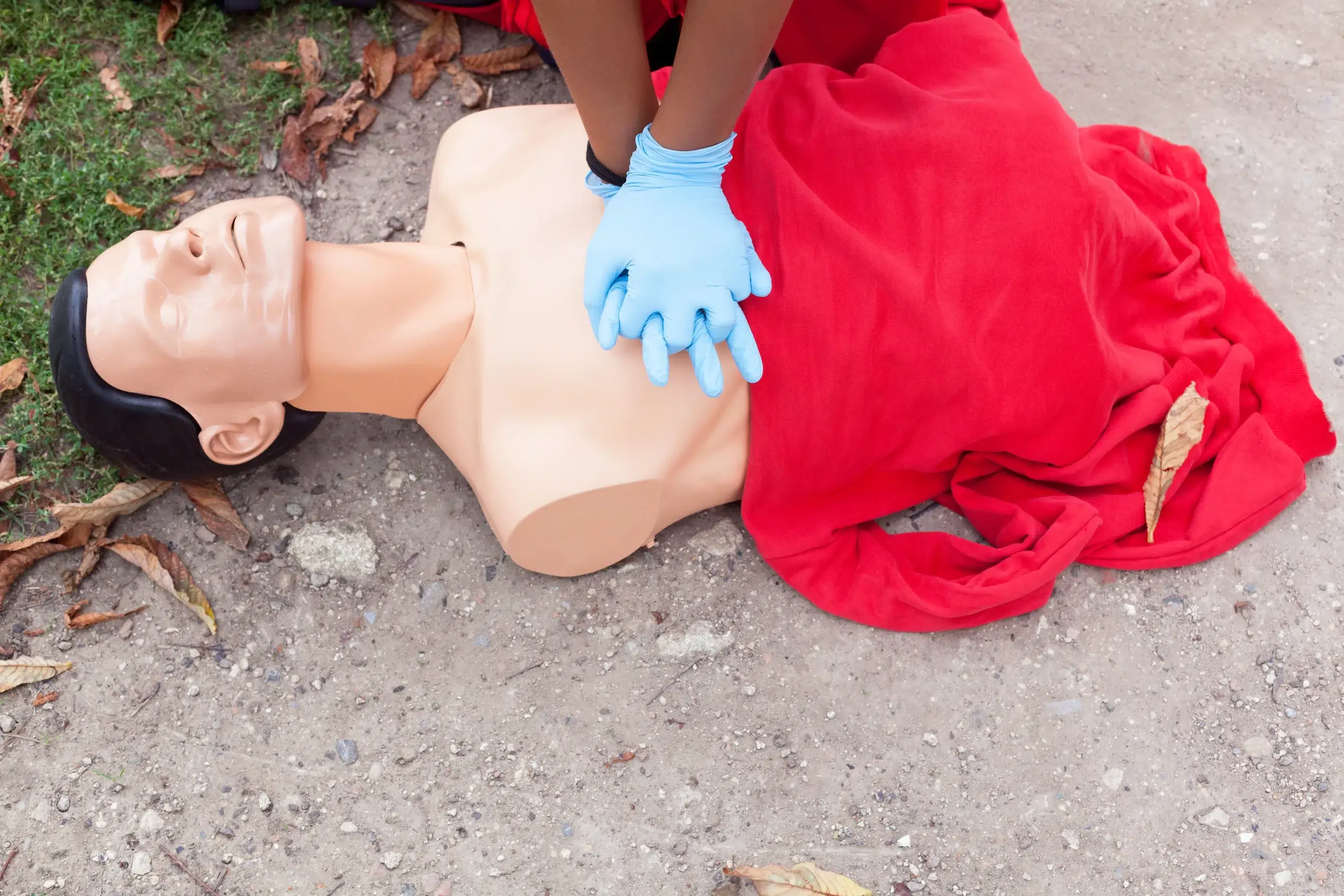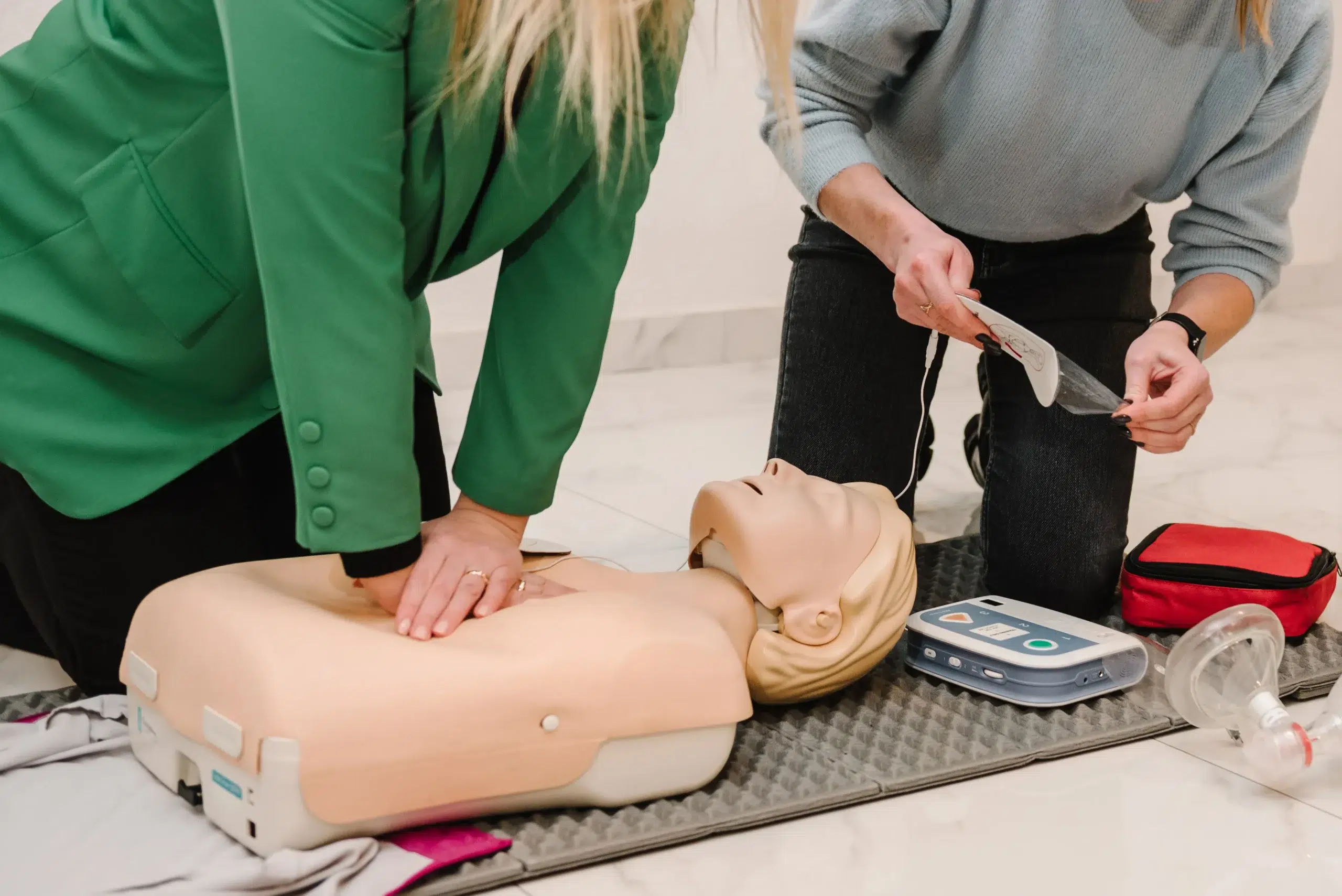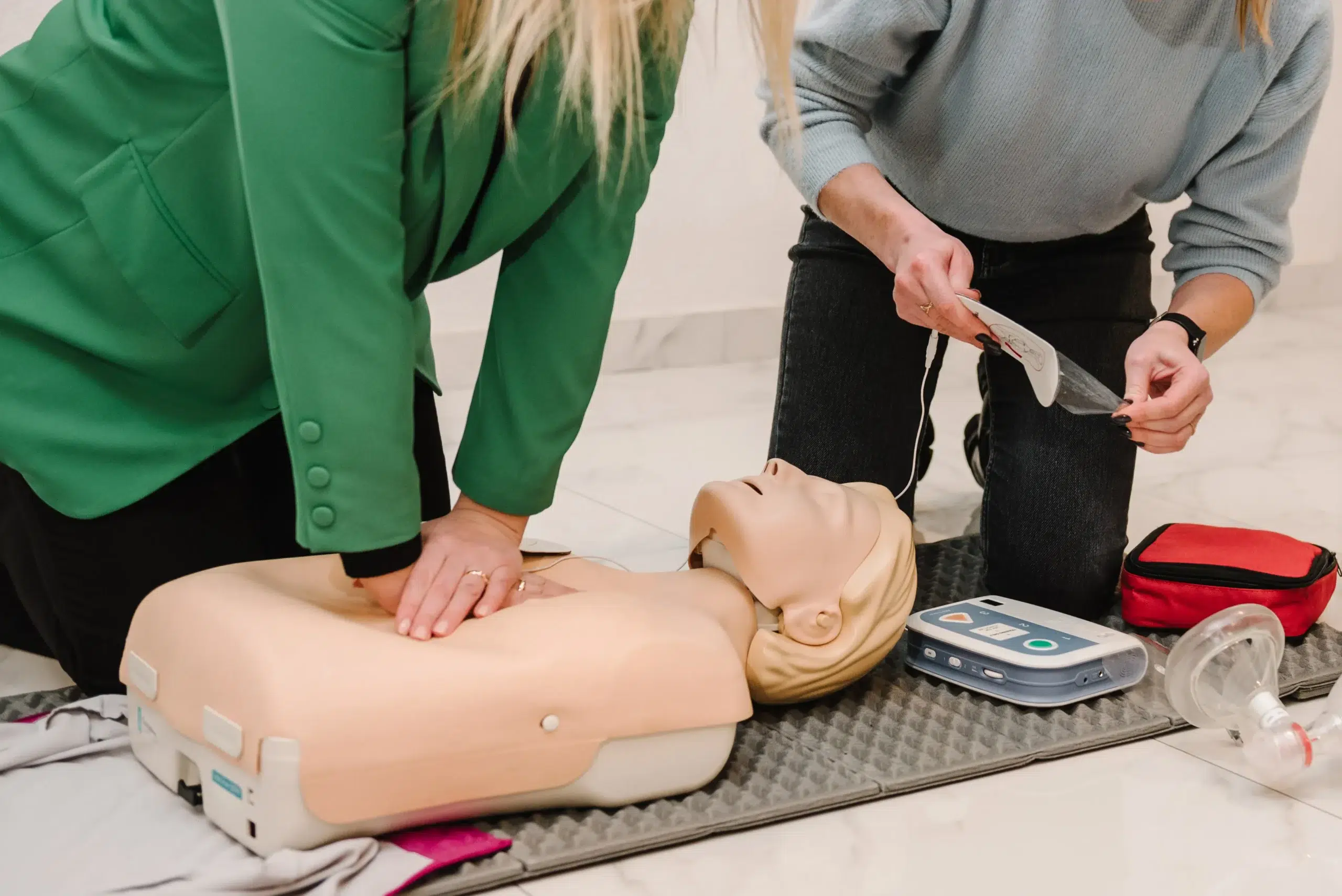In a world where seconds can count, being equipped with life-saving skills like Basic Life Support (BLS) is invaluable. If your search for “American Heart Association BLS courses near me in Citrus Heights” brought you here, you’re on the path to empowering yourself with the knowledge and skills to respond effectively in medical emergencies. This guide will walk you through the essentials of BLS certification, from understanding key skills and course content to finding the right training program in Citrus Heights. We’ll also address common questions about BLS, discuss the value of hands-on training, and offer practical tips to prepare you for your course.
Key Takeaways
- BLS is more than just CPR: It includes essential skills like using an AED, clearing obstructed airways, and providing ventilation, making it a comprehensive approach to life-threatening emergencies. Consider BLS certification to gain a broader skill set for responding to various medical crises.
- Find the right BLS course for you: Think about your individual needs and compare courses based on format (online, blended, in-person), schedule, and provider. Look for AHA-certified courses like those offered by Citrus Heights CPR Classes and explore options like the RQI program for flexible learning.
- Hands-on practice is essential: Mastering BLS techniques requires practical experience. Choose a course that includes in-person skills sessions with manikins and realistic scenarios to build your confidence and proficiency in real-world situations.
What is BLS?
Basic Life Support (BLS) teaches the essential skills to respond to life-threatening emergencies. It goes beyond basic CPR to include techniques like using a bag-valve mask and relieving obstructed airways. BLS focuses on providing high-quality chest compressions, delivering appropriate ventilation, and ensuring early defibrillation when necessary. Developed by the American Heart Association (AHA), BLS certification courses equip individuals with the knowledge and confidence to act quickly and effectively in critical situations.
Key BLS Skills
BLS certification classes cover a range of crucial skills. You’ll learn how to perform high-quality CPR for adults, children, and infants, including proper hand placement, compression depth, and ventilation techniques. The training also covers using an automated external defibrillator (AED), a critical device for restoring a normal heart rhythm. Additionally, BLS certification teaches how to recognize and manage choking emergencies and other respiratory issues. These BLS skills are essential for anyone working in healthcare and are often required for healthcare students. Citrus Heights CPR Classes offers comprehensive BLS training to prepare you for these critical situations.
Why Get BLS Certified?
BLS certification demonstrates your commitment to providing high-quality care and your ability to respond effectively in emergencies. For healthcare professionals, it’s often a job requirement and a vital credential for career advancement. Beyond the professional benefits, BLS certification empowers you to make a real difference in someone’s life. Knowing you have the skills to potentially save a life brings confidence and peace of mind. The AHA offers various programs, including the Resuscitation Quality Improvement (RQI) program, a popular choice for medical professionals seeking BLS certification. RQI provides a flexible and convenient way to maintain your skills and stay up-to-date with the latest guidelines. Whether you’re a healthcare provider, a student, or simply want to be prepared for emergencies, BLS certification is a valuable investment. Contact us to learn more about our BLS courses.
BLS Courses in Citrus Heights
Citrus Heights offers a variety of BLS courses to meet different needs. Whether you’re a healthcare provider, a teacher, or simply someone who wants to be prepared for emergencies, you can find the right training nearby. Let’s explore some of the BLS courses available in Citrus Heights:
BLS for Healthcare Providers
This course is designed for healthcare professionals, including doctors, nurses, paramedics, and other medical personnel. It covers core life support skills for adult, child, and infant patients, with a strong emphasis on teamwork and high-quality CPR. Training typically includes AED use, bag-mask ventilation techniques, and relief of choking. Citrus Heights CPR Classes offers these essential BLS courses for healthcare providers.
Heartsaver CPR AED
The Heartsaver CPR AED course focuses on teaching CPR and AED use for adults, children, and infants. This course is suitable for those outside of healthcare who need CPR knowledge for their jobs or personal lives, such as lifeguards, teachers, coaches, or anyone who wants to be prepared. For many roles, BLS certification is a job requirement.
Heartsaver First Aid CPR AED
This comprehensive course combines CPR and AED training with first-aid instruction. You’ll learn how to respond to common injuries like cuts, burns, and fractures, plus how to manage medical emergencies until professional help arrives. The Heartsaver First Aid CPR AED course offers a well-rounded approach to emergency preparedness, giving you the confidence to handle a range of situations. The variety of teaching methods used in Citrus Heights makes learning these vital skills accessible and engaging.
Find BLS Training in Citrus Heights
If you’re searching for “BLS classes near me” in Citrus Heights, you have several solid options for high-quality training. These providers offer various courses and schedules to fit your needs.
Citrus Heights CPR Classes
Citrus Heights CPR Classes offers American Heart Association (AHA) training courses, including BLS, ACLS, and PALS, right here in Citrus Heights. They pride themselves on convenient scheduling, with classes offered daily throughout the week. For added convenience, they also offer on-site training, bringing the BLS course to your workplace or group. Contact them for more information or to discuss your specific training needs.
Safety Training Seminars
Safety Training Seminars is another excellent choice for AHA-certified BLS, ACLS, PALS, CPR, and First Aid training in Citrus Heights. As a woman-owned business, they focus on providing high-quality instruction and flexible scheduling options, with courses offered seven days a week. This makes it easier to fit training into your busy schedule. Visit their website for upcoming class dates and registration.
CPR Classes Sacramento
For those also considering options in the greater Sacramento area, CPR Classes Sacramento offers BLS certification in Citrus Heights. These courses meet the requirements for healthcare professionals and students. They emphasize the importance of BLS for healthcare providers and offer training tailored to their specific needs.
Course Formats: What to Expect
Choosing the right course format is key to successful learning. Citrus Heights CPR Classes offers a variety of options to fit your schedule and learning style. Let’s explore the different formats available for BLS training: online learning, in-person skills practice, and blended learning.
Online Learning
The online portion of our courses allows you to learn at your own pace, covering essential concepts and procedures. This format is especially convenient for busy professionals and those who prefer self-directed study. Our online modules use interactive elements and engaging content to make learning enjoyable and effective. For healthcare professionals seeking a streamlined path to certification, the American Heart Association’s RQI program offers a modern approach to BLS, ACLS, and PALS training.
In-Person Skills Practice
Hands-on training is crucial for mastering BLS skills. Our in-person skills sessions provide the opportunity to practice techniques on manikins and participate in realistic scenarios. This practical experience builds confidence and ensures you’re prepared to respond effectively in real-life emergencies. These sessions are led by certified instructors who provide personalized feedback and guidance. For those entering or working in the healthcare field, BLS certification is often a requirement, making these in-person sessions essential.
Blended Learning
For a comprehensive approach, blended learning combines the flexibility of online learning with the hands-on experience of in-person training. You’ll complete online modules at your convenience, then attend an in-person skills session to practice what you’ve learned. This format offers the best of both worlds, allowing you to learn the material thoroughly and develop the necessary practical skills. Citrus Heights CPR Classes offers blended learning courses that use manikins and realistic scenarios to prepare you for real-world emergencies.
BLS Course Costs & Value
Getting BLS certified is an investment in your skills and career. Let’s break down the typical costs associated with BLS courses and explore the value this training provides.
Typical Prices
BLS course fees in Citrus Heights, like elsewhere, can fluctuate based on the training center, course format (online, in-person, or blended learning), and included materials. Many providers offer competitive rates, especially for group training. Citrus Heights CPR Classes is a great local option committed to affordable training. Knowing the typical price range helps you budget and find a course that meets your needs.
Group Discounts & Promotions
If you’re coordinating training for a group, such as your workplace or a community organization, look for training centers that offer group discounts. Bay Area CPR is one such provider, and many others offer similar programs. These discounts can significantly lower the per-person cost, making it easier to train multiple people. It’s a smart way to equip your team with life-saving skills cost-effectively. Reach out to training centers directly to inquire about group rates and package deals.
Low Price Guarantee
Some training centers go the extra mile to ensure affordability. Citrus Heights CPR Classes offers a low-price guarantee, giving you confidence that you’re receiving quality training at a competitive price. This commitment to accessibility helps remove financial barriers that might prevent people from pursuing BLS certification, which is particularly helpful for individuals paying for training themselves. Before committing to a course, compare prices and check for any low-price guarantees or special offers.
Get BLS Certified
Getting your BLS certification is straightforward. Here’s what to expect:
Certification Steps
The American Heart Association RQI (Resuscitation Quality Improvement) program is a popular and efficient way for medical and healthcare professionals in Citrus Heights to earn their official American Heart Association BLS, ACLS, and PALS certifications. Citrus Heights CPR Classes offers convenient options, including RQI courses for a streamlined approach. You can also explore our traditional BLS certification courses to find what works best for you. For groups, we offer discount group classes.
Renewal and Validity
Your BLS Provider card is valid for two years. To maintain your credentials and stay current with life-saving techniques, you’ll need to renew your certification. We offer renewal courses to simplify this process. Check our contact us page for information on upcoming renewal opportunities and keep your skills sharp.
Who Needs BLS?
Knowing whether you need BLS certification versus simply want it is an important distinction. Some professions require this specific credential, while others may accept other types of CPR and first-aid training. Let’s break down who needs a BLS certification.
Healthcare Professionals
Basic Life Support (BLS) is a cornerstone for anyone working in healthcare. Physicians, nurses, paramedics, emergency medical technicians (EMTs), dentists, and other healthcare providers typically require this certification. It ensures they possess the skills to respond to cardiac arrest and other emergencies effectively. Many healthcare employers mandate BLS certification as a condition of employment, and maintaining current certification is crucial for career advancement. Check out our BLS course to learn more.
Other Essential Workers
Beyond healthcare, several other professions benefit from BLS certification. These include lifeguards, firefighters, police officers, childcare providers, teachers, coaches, and those working in the fitness industry. While BLS certification may not always be a strict requirement for these roles, having these skills can be invaluable in emergency situations. For those working with children or vulnerable populations, BLS training provides added confidence and preparedness. Contact us to discuss group discounts for your workplace. Check with your employer or licensing board to see if BLS training is recommended or required.
Medical Students
If you’re a medical student, BLS certification is almost certainly a necessity. Most medical and nursing schools require students to obtain BLS certification before beginning clinical rotations or interacting directly with patients. The RQI program offered by the American Heart Association is a popular choice for medical students due to its flexible, self-directed learning format and focus on high-quality resuscitation skills. It’s a smart move to get BLS certified early in your medical training, as it demonstrates your commitment to patient safety and prepares you for real-world medical scenarios. The RQI program may be a good fit for your needs.
Prepare for Your BLS Course
So, you’ve decided to get your BLS certification—smart move! Whether you’re a healthcare provider or simply want to be prepared for emergencies, having these skills can make a real difference. To make the most of your BLS course, a little prep work goes a long way.
Materials & Pre-Course Prep
Before your class, familiarize yourself with the American Heart Association’s BLS course materials. Citrus Heights CPR Classes uses the RQI (Resuscitation Quality Improvement) program, a highly effective way to learn BLS skills. RQI blends online learning with hands-on practice and provides immediate feedback, so you’ll build confidence quickly. Check with your instructor to see if there are any specific materials you should review beforehand. Sometimes, pre-course work helps you hit the ground running on the day of your training. You can also explore their low price guarantee for more information on pricing and value.
What to Bring
While your BLS provider will have all the essential equipment, there are a few things you can bring to enhance your learning experience. A notepad and pen are always helpful for jotting down key points or questions. Comfortable clothing is a must, as you’ll be actively participating in demonstrations and practice scenarios. And don’t forget anything else that might make you more comfortable, like a water bottle or a light snack. You’ll want to be focused and energized throughout your training! If you have any questions about what to expect, reach out to Citrus Heights CPR Classes—they’re happy to help. Consider checking out their group discount options if you’re planning on attending with colleagues or friends.
Choose the Right BLS Course
Choosing the right BLS course is crucial for receiving effective training that meets your specific needs. Whether you’re a healthcare professional, a student, or someone wanting to be prepared for emergencies, consider these factors when making your decision.
Assess Your Needs
Before you start searching for “BLS classes near me,” take a moment to consider your requirements. Are you required to have BLS certification for your job or education program? BLS certification in Citrus Heights is often a prerequisite for healthcare providers and students in medical fields. Understanding this ensures you choose a course aligned with your professional and educational goals. If you’re unsure, check with your employer or program advisor for guidance. Citrus Heights CPR Classes offers a range of BLS courses designed to meet various needs. For those specifically seeking American Heart Association certification, make sure the course you choose is AHA-approved.
Compare Courses
Once you know what type of BLS certification you need, compare different courses. Look at what’s available in your area and from different providers. Consider factors like course schedules, class size, and instructor experience. Some people prefer smaller classes for more personalized attention, while others prioritize weekend or evening options for flexibility. Reading reviews or asking for recommendations can also give you insights into other students’ experiences. Checking multiple providers, like Safety Training Seminars, can help you find the best fit.
Schedule Training
After you’ve found the right BLS course, schedule your training. If you’re a healthcare professional in Citrus Heights, the American Heart Association’s RQI program offers a streamlined way to get your BLS, ACLS, and PALS certifications. This program often provides flexible scheduling options and efficient training, allowing you to maintain your certifications without significant disruption to your work. Don’t wait until the last minute; book your training in advance to secure your spot and ensure you meet any deadlines. You can often find discounts or promotions for group bookings or early registration, so explore those options if applicable.
BLS Myths Debunked
BLS vs. CPR
One common misconception is that BLS (Basic Life Support) and CPR (Cardiopulmonary Resuscitation) are interchangeable. CPR is a core part of BLS, but BLS covers more. Think of CPR as focusing on chest compressions and rescue breaths for someone who has stopped breathing or has no pulse. BLS builds on those skills, adding techniques for various life-threatening emergencies. BLS certification covers a broader scope, including using an AED, relieving choking, and providing initial care for respiratory distress and cardiac arrest. It’s designed for healthcare providers, first responders, and other professionals needing a comprehensive skill set. Understanding the difference between BLS and CPR is key when deciding which certification suits you.
Hands-on Training: Why It Matters
Another myth is that online-only BLS training is enough. Online courses can be helpful supplements, but they can’t replace hands-on learning. Imagine trying to learn to drive by reading a book—it wouldn’t work! Mastering life-saving skills like BLS requires practice. In-person BLS training lets you practice techniques on manikins, receive instructor feedback, and work through realistic scenarios. This immersive experience builds confidence and muscle memory, preparing you to act quickly in an emergency. Hands-on training isn’t just important; it’s essential for developing competence and proficiency in BLS.
Related Articles
- BLS Certification in Sacramento: Your Comprehensive Guide – Citrus Heights CPR Classes
- BLS for Healthcare Providers in Sacramento: A Complete Guide – Citrus Heights CPR Classes
- Find BLS Classes Near Me: Your Comprehensive Guide – Citrus Heights CPR Classes
- BLS Courses in Sacramento: Your Complete Guide – Citrus Heights CPR Classes
- BLS Recertification Near Me: A Practical Guide – Citrus Heights CPR Classes
Frequently Asked Questions
What’s the difference between BLS and CPR? CPR is actually part of BLS. BLS (Basic Life Support) is a more comprehensive approach to life-saving techniques, encompassing CPR (chest compressions and rescue breaths), AED use, and relief of choking. Think of BLS as a broader skill set designed for healthcare providers and other professionals who might encounter various medical emergencies.
Is online-only BLS training sufficient? While online BLS courses offer valuable information and flexibility, they don’t replace the essential hands-on practice. Like any skill, mastering BLS requires physical practice and feedback from a certified instructor. In-person training allows you to work with manikins, simulate real-life scenarios, and receive personalized guidance, building your confidence and competence.
Why is BLS certification important for healthcare providers? BLS certification is often a mandatory requirement for many healthcare roles. It signifies that a healthcare professional possesses the essential skills to respond effectively to life-threatening emergencies like cardiac arrest and respiratory distress. It’s not just about meeting job requirements; it’s about being equipped to provide crucial care when it matters most.
How much does a BLS course typically cost? BLS course fees vary depending on the training center, location, course format (online, in-person, or blended), and included materials. Many providers offer competitive pricing and group discounts. It’s always a good idea to compare prices and inquire about any available discounts before registering.
How do I find a BLS course near me? Start by searching online for “BLS classes near me” or “BLS certification [your city/region]”. Look for training centers offering AHA-certified courses, as these meet widely accepted standards. Consider factors like course schedules, class size, instructor experience, and reviews when making your decision. Don’t hesitate to contact training centers directly to discuss your specific needs and ask any questions you may have.


